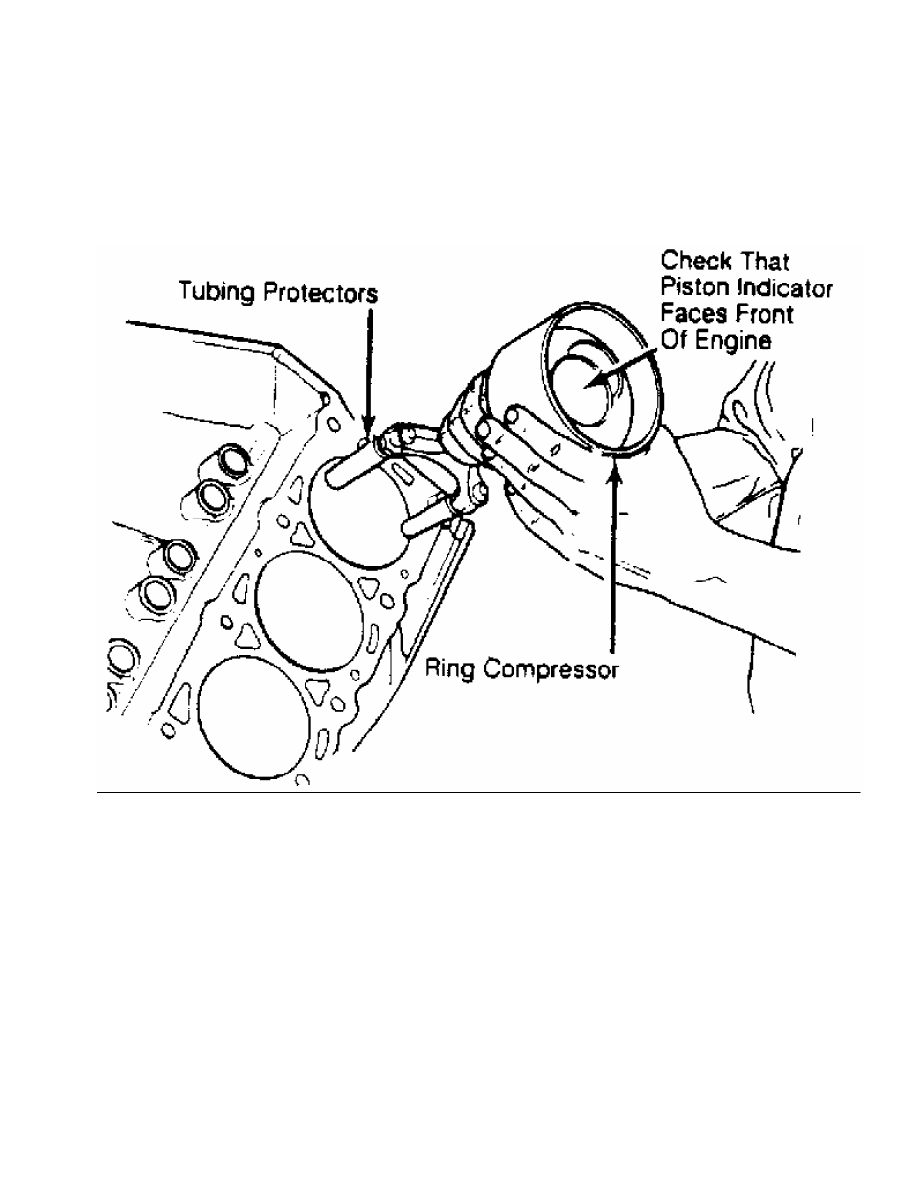Mitsubishi Montero (1998+). Manual - part 143

over connecting rod bolts. Install piston and connecting rod assembly.
Ensure piston notch, arrow or "FRONT" mark is toward front of engine.
See Fig. 17.
Fig. 17: Installing Piston & Connecting Rod Assembly - Typical
This Graphic For General Information Only
Carefully tap piston into cylinder until rod bearing is
seated on crankshaft journal. Remove protectors. Install rod cap and
bearing. Lightly tighten connecting rod bolts. Repeat procedure for
remaining cylinders. Check bearing clearance. See
MAIN & CONNECTING ROD BEARING CLEARANCE in this article.
Once clearance is checked, lubricate journals and bearings.
Install bearing caps. Ensure marks are aligned on connecting rod and
cap. Tighten rod nuts or bolts to specification. Ensure rod moves
freely on crankshaft. Check connecting rod side clearance. See
CONNECTING ROD SIDE CLEARANCE in this article.
CONNECTING ROD SIDE CLEARANCE
Position connecting rod toward one side of crankshaft as far
as possible. Using feeler gauge, measure clearance between side of
connecting rod and crankshaft. See Fig. 18. Clearance must be within
specifications.